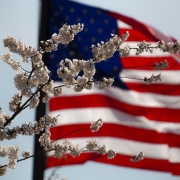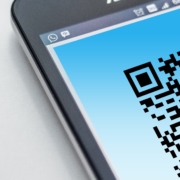BARE Shares – Why Are Shoppers Booing? 6 Ways Retailers’ Service Can Trick Or Treat Customers
Happy Halloween from BARE International! Here, we’ve shared an article by Bryan Pearson for Forbes – Why Are Shoppers Booing? 6 Ways Retailers’ Service Can Trick Or Treat Customers.
‘To put it in trick-or-treat terms, the retail experience is, to many shoppers, a lot like dealing with Dum Dums.
It may come in the form of lip service, the hollowness of feigned employee interest or reward programs that are so complex customers want to scream: Shoppers come expecting a treat and leave disappointed. This is often because retailers are invested in innovative shopper attractions that, while often smart, may distract them from the most pivotal shopper demand: a satisfying experience.
Some retailers simply place their guidelines for good service on autopilot. Others have invested in great concepts, such as in-store dining, but have not ensured the total experience is gratifying. Many are not maximizing the powerful role of employees in solving shopper challenges.
The propensity among retailers to compete by using bells and whistles, rather than soft-sided features such as genuine interest, is understandable. Online competition alone is applying a lot of pressure — digital retail sales are predicted to make up 25% of total retail by 2025, according to ABI Research. But digital showrooms and flashy in-store services do not alone guarantee a good experience; they’re just another option.
In short, many retailers make quick fixes masquerading as good service. Shoppers are not so easily fooled. Here’s a list of three common attempts retailers make to dress up rote service, and three examples of them getting it right.
3 Big Boos!
Ghostly presents: Poorly targeted, phantom promotions call into question any benefit of shopping with a retailer or brand. Nearly nine in 10 big U.S. retailers (88%) say they consistently send personalized communications to shoppers, yet 64% of shoppers think they’re getting the same offers as everyone else. And nearly 30% of shoppers say irrelevant communications are the leading reason why they do not like receiving any “personalized” messages. Retailers should invest in the analytics to get it right or reconsider how they promote personalization to their customers.
Labyrinths: Any retail service or program designed to improve shopper loyalty should be easy to understand, and this extends to reward programs. One that lacks clarity is a bad experience wrapped up in convoluted promises. Shoppers should know the basics before even enrolling. This includes how much they have to spend to earn a reward, a description of the rewards, the reward shelf life and how the shopper’s information will be used.
Zombies: It is essential to have the right number of employees on staff, but if they are indifferent to shopper needs, then what’s the point? Employees should be schooled to appreciate the importance of greeting shoppers upon arrival, not just at departure and of being in the aisles to help by always looking to resolve pain points or shopper issues. This requires ongoing training and treating staff as well as the shopper should be treated.
3 Experiential Treats!
Snickers: People like to shop Nordstrom, and they like to shop Trader Joe’s. The common denominator of these different brands is they both know how to inject pleasure into their shopping environments. It could be as straightforward as making it easy to find items on the shelf and eliminating confusion. It could be an empowered worker who can troubleshoot a special request without a manager. The trick is anticipating the shopper mindset in that particular environment. Of course, offering free samples and a little live music never hurts, either.
Payday: Wowing shoppers can be pretty simple; it often just takes providing them with more than they came for, as a benefit. Kroger gives away free slices of fresh pizza at some of its stores. At the Samsung 837 store in Manhattan, shoppers can experience the evacuation of the Titanic or travel through a haunted building, both using virtual reality via Samsung products. None of these experiences require an RSVP, and shoppers get to sample the goods, which benefits the brands.
Starburst: If experience is retail’s North Star, then the strategic intent of that desired experience and the platform upon which the retailer has built it needs to stretch from in-store to online to delivery, and so on. It’s elementary, but small hazards could upend the shopper’s brand impression. The furniture chain Crate & Barrel, for example, offers an app that maintains the user’s shopping cart so customers can pick up wherever they left off, regardless of device. This eliminates the chances that a shopper will abandon a possible purchase and, importantly, spreads the experiential stardust across all channels for a consistent encounter.
Lastly, retailers shouldn’t hide from their mistakes; they should view them as opportunities to create authentic interactions with their customers. Acknowledging the issue and even involving customers in potential solutions could turn that bad experience into one that enhances shopper loyalty. Shoppers, like employees, are key partners in the process. If retailers think that way, then instead of Dum Dums, they can be considered one of the Three Musketeers.’
Follow Bryan Pearson on Facebook, Twitter and his blog for more on retail, loyalty and the customer experience.
***
BARE International sets the industry standard as the largest independent provider of customer experience research, data, and analytics for companies worldwide. On any given day, (including Halloween!) BARE International is doing research for clients in more than 150 countries, completing more than 50,000 evaluations each month.
Take advantage of BARE’s 30 years of experience to work for you. Read our story.










